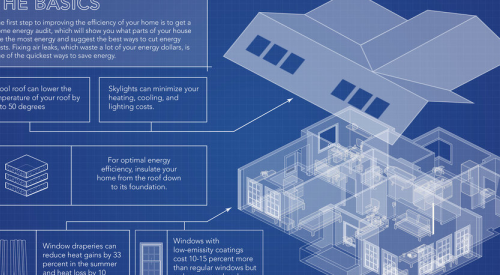One of the most important considerations in home building and site development is deciding on an appropriate and cost-effective wastewater treatment system. Soil type, local code requirements and a range of other factors figure into the equation.
When is an aerobic wastewater treatment system a better choice than a conventional septic system? Here's a look at the key issues involved in choosing a system and navigating the approval process.
Before purchasing land or thinking about building or developing land, analyze the site's soil type, depth and topography. Soil type and condition determine the absorption, or percolation (perc) rate, of the soil — how fast water passes through it. Wastewater must have somewhere to go or it will pool on top of the surface, as it does with clay and rock. Wastewater treatment codes and standards for specific soil types, depths and topographic features could restrict building on the site at all.
Many state and county jurisdictions now use electronic mapping systems to identify important topographic information. These systems provide builders/ developers with information, such as the perc rate, to determine the type of wastewater treatment system a particular area requires. Specifically, soils with a better absorption rate usually require a smaller area for the drain field, which is beneficial because it requires less site excavation. Soils with a poor absorption rate require a larger drain field or possibly a non-conventional wastewater treatment system.
Where a septic system is specified, local codes require a reserve drain field area at least the same size as the amount of land specified for a new septic system — as a precautionary measure — in case the originally installed drain field fails. Some jurisdictions allow builders to reduce or eliminate the reserve area if the wastewater is pretreated before it is discharged from the system. Pretreatment refers to a technology — such as aerobic systems or recirculating sand filters —that precedes discharge to a subsurface wastewater infiltration system.
Before choosing system specifications, identify:
- All applicable state and local regulations on sewage handling and disposal regulations;
- Setback requirements, which help determine the location of the septic system and drain field by noting how far they must be from the home's foundation, wells, boundary lines and creeks and streams;
- Minimum separation distances;
- Permitting requirements;
- System design and selection criteria;
- How to apply for a septic permit;
- Types of systems approved by the jurisdiction; and
- The process for permitting experimental systems.
Advantages of an Aerobic System
Septic tanks settle out solids but do little else to treat wastewater before it goes to the drain field. Controlling nitrogen discharge from septic systems is becoming increasingly important in developments, particularly where they are close to aquifers and where pollution of watersheds has become a major concern.
In aerobic treatment, air is injected and circulated inside the tank, encouraging decomposition. In its evaluation of the performance of aerobic wastewater treatment systems in Anne Arundel County, Maryland, PATH researchers at the NAHB Research Center found that one innovative nitrogen-reducing system installed at a residential field site has shown an average 80 percent reduction in total nitrogen. That's a significant success in the Chesapeake Bay area, where strict county and state legislation designates land within 1,000 feet of fragile tidal waters for protection of resources. (PATH is also evaluating wastewater treatment systems in Loudoun County, Virginia).
Aerobic treatment systems are appropriate for land with poor soil, high groundwater/bedrock, little available space for a drain field or a high proportion of organic matter.
In addition to reducing nitrogen and pollutant concentrations in septic tank effluent, the benefits of aerobic wastewater treatment systems include:
- Reduction in organic loading, which can prolong the life of the drain field;
- Ability to meet stricter environmental requirements;
- Possible reduction in drain field size; and
- Reduced sludge build-up in the tank.
You won't find many folks who have used these systems or understand their benefits, even in environmentally sensitive areas — not yet, at least. "It's just getting cranked up around here," says Tom Brown Sr., of American Building Services in Severna Park, Maryland.
And aerobic systems come with special maintenance issues you should know about, including:
- An alarm system that alerts homeowners when the blower is not working;
- The need for hard-wiring the blower's motor to prevent unwanted removal of the electrical plug from the receptacle;
- Diminished effectiveness of the system if it is neglected or turned off, if harmful chemicals are poured down the drain, and if the ambient temperature is too low.
Aerobic tanks, which are not accepted by all local governments, can cost two to three times more than a standard septic tank, although this varies based on design, location, size, installation and maintenance requirements. Savings can be realized if the drain field can be reduced or eliminated, or if the tank's life can be prolonged.
For a smooth approval process, builders and developers should know the types of systems with which state and local authorities are familiar, and follow these simple guidelines:
- As the environmental sensitivity of a site increases, additional wastewater treatment becomes necessary and typically more complex.
- In environmentally sensitive areas, wastewater must be treated to higher levels.
- Work with local health and code officials to develop a common sense approach to the design and implementation of your wastewater treatment system.
- Do not try to circumvent the rules and regulations of the codes and health department — their job is to protect the general public and the environment.
A complete review of these findings and information on various wastewater treatment systems is located online at www.toolbase.org/fieldeval.
| Author Information |
| Mike Grothe is a research analyst with the NAHB Research Center in Upper Marlboro, Md. |











